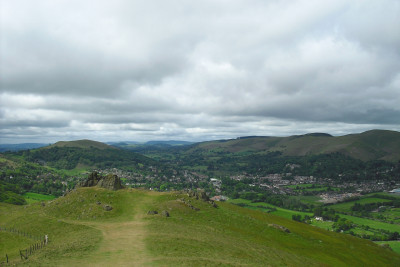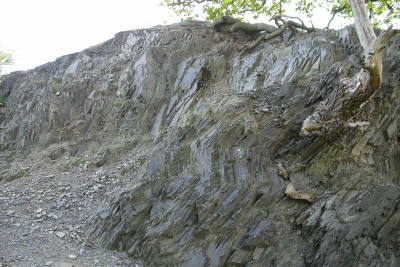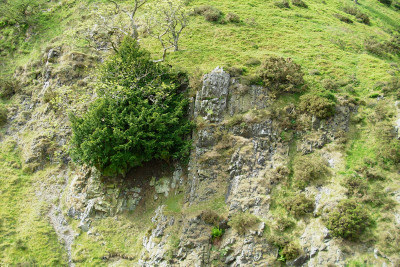| Tuesday 17th - Thursday 19th May 2011 | ||||||||||||||||||
| CHURCH STRETTON | ||||||||||||||||||
| Tour: Ramblers Worldwide | ||||||||||||||||||
| Participants: max. of 13 | ||||||||||||||||||
| Weather: Mostly dry with some sunshine. | ||||||||||||||||||
This three-day Ramblers walking holiday was advertised as a geological walk, but it turned out that no instruction in geology was available. I have interpreted the geology as best I can with the aid of relevant geology books. My summary of the geology should be accurate, but my interpretation of the photographs may not be.
Summary of Geology: This visit to Church Stretton offered me my first opportunity to see the basement of Avalonia, with its Precambrian age rocks. Rocks of similar age are found in England and Wales in only a very few isolated locations, notably in Anglesey, in the Charnwood Forest of Leicestershire and in the Malvern Hills. The oldest rocks of the area may be the Uriconian Volcanics, which are thought to represent an ancient island arc, dated at around 570 Ma. One exposure of this group of rocks is found on Caer Caradoc, just to the east of the village of Church Stretton. Church Stretton itself lies along the length of a fault line which extends south-westwards deep into Wales and which was active for about 500 million years. Further to the west lies another, parallel fault, the Pontesford-Linley Fault. These two together enclose a strike-slip bounded terrane occupied at its base by Uriconian Volcanics, and at higher levels by unaltered sedimentary rocks - mudstones, sandstones and conglomerates (with eroded Uriconian clasts). This sedimentary sequence is named the Longmynd Supergroup and has been dated at around 550 Ma, so these sediments are Precambrian and contain no visible signs of life. At some time in latest Precambrian or in early Cambrian times, this layered sequence of rocks was folded into an enormous syncline, bounded by - and with its axis parallel to - the major faults. Thus, the rocks of the Longmynd Hills today are everywhere steeply dipping, always towards the west, although those in the Western Longmynd have been overturned.
|
||||||||||||||||||
|
||||||||||||||||||


